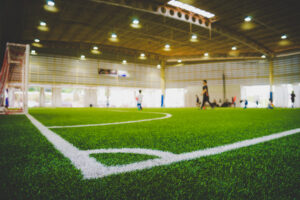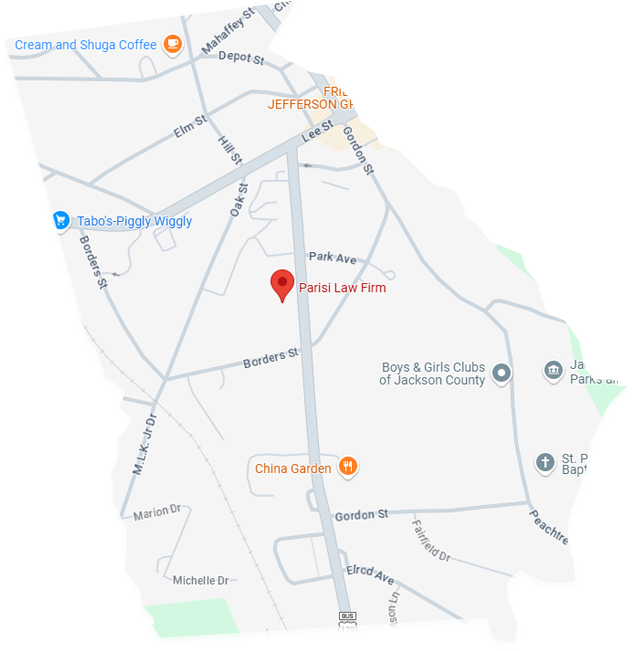
Injury Liability in Public Sports: What You Need to Know
When you step onto a public sports field, you expect to focus on the game—not worry about serious injuries that could change your life. While sports inherently carry some risk, not all injuries are simply “part of the game.” Understanding when someone else’s negligence caused your injury can mean the difference between facing mounting medical bills alone and receiving the compensation you deserve.
Sports injuries affect millions of Americans each year, with emergency departments treating over 3.5 million children and teens annually for sports-related injuries. Many of these incidents occur on public fields where schools, cities, and organizations have legal obligations to maintain safe environments. When they fail in these duties, injured players and their families have legal options.
This guide explores the complex world of sports injury liability, helping you understand when an injury might warrant legal action and how to protect your rights after an accident on public sports fields.
Understanding Liability on a Public Sports Field
Public sports fields create unique legal situations because multiple parties often share responsibility for player safety. Unlike private facilities, public fields involve government entities, educational institutions, and various organizations that must follow specific safety standards and protocols.
Liability in public sports settings typically falls under premises liability law, which requires property owners and operators to maintain reasonably safe conditions. This doesn’t mean eliminating all risk—that’s impossible in sports—but it does require taking reasonable steps to prevent foreseeable injuries.
The key legal concept here is “reasonable care.” Just as maintaining good nutrition with tooth-friendly foods promotes long-term dental health, maintaining proper field conditions and safety protocols promotes player safety and reduces liability exposure for facility operators.
Common Risks on a Sports Field
Public sports fields present numerous hazards that facility operators must address:
Surface and Equipment Issues:
- Uneven playing surfaces with holes, rocks, or debris
- Poorly maintained goal posts or nets
- Defective or outdated protective equipment
- Inadequate lighting for evening games
Environmental Hazards:
- Wet or icy conditions without proper warnings
- Dangerous weather conditions during play
- Poor drainage leading to unsafe field conditions
- Inadequate fencing around play areas
Facility Design Problems:
- Insufficient space between playing areas
- Dangerous proximity to walls, trees, or other obstacles
- Poor spectator area placement creating collision risks
- Inadequate emergency access routes
When Negligence Leads to Sports Injury Cases
Not every sports injury creates legal liability. Courts distinguish between injuries from inherent game risks and those caused by negligence. Negligence occurs when someone fails to exercise reasonable care, creating unreasonable risks for players.
Examples of negligent behavior include:
- Failing to inspect fields regularly for hazards
- Ignoring known dangerous conditions
- Providing defective safety equipment
- Inadequate supervision during high-risk activities
- Poor emergency response planning
The challenge lies in proving that negligence—not just bad luck or normal game contact—caused the injury. This requires understanding both the legal standards and the specific circumstances surrounding your incident.
Who Is Responsible for Sports Field Injuries?
Determining responsibility for sports field injuries often involves multiple parties, each with different legal obligations and potential liability exposure.
Liability of Schools, Cities, and Organizations
Municipal Governments typically own many public sports facilities and bear primary responsibility for field maintenance and safety. They must conduct regular inspections, address known hazards promptly, and ensure facilities meet safety standards. However, government entities often enjoy certain legal protections called “sovereign immunity,” which can limit their liability in some situations.
School Districts face significant responsibility when students use their facilities. They must provide adequate supervision, maintain equipment properly, and ensure coaches receive appropriate training. Schools also have heightened duties to protect minors, making their liability standards often stricter than those for adult participants.
Sports Organizations and Leagues that use public facilities may share liability depending on their level of control over field conditions and safety protocols. Organizations that schedule games, provide equipment, or direct field maintenance often assume some legal responsibility for participant safety.
Private Contractors hired to maintain fields, install equipment, or provide services may bear liability for injuries resulting from their negligent work. This includes landscaping companies, equipment installers, and maintenance crews.
Role of Coaches and Supervisors in Preventing Harm
Coaches and supervisors occupy critical positions in preventing sports injuries and may face personal liability when their negligence contributes to harm. Their responsibilities include:
Proper Training and Instruction:
- Teaching correct techniques to minimize injury risk
- Ensuring players understand safety rules and procedures
- Providing age-appropriate training intensity
- Recognizing when players lack necessary skills for certain activities
Equipment and Safety Management:
- Inspecting protective gear before use
- Ensuring proper fit and condition of equipment
- Maintaining first aid supplies and emergency equipment
- Implementing safety protocols during practice and games
Environmental Awareness:
- Assessing field conditions before allowing play
- Monitoring weather conditions and making appropriate decisions
- Recognizing and addressing potential hazards
- Ensuring adequate hydration and rest periods
Just as a tooth-friendly diet requires consistent attention to nutritional choices, effective sports supervision requires constant vigilance about safety factors that could lead to injuries.
Sports Injury Cases and Legal Grounds
Understanding the legal landscape of sports injury cases helps victims and families make informed decisions about pursuing compensation.
Examples of Sports Injury Claims Cases
Facility Maintenance Failures: A high school football player suffered a severe leg fracture when his foot caught in an unmarked hole on the practice field. The school district had received multiple complaints about field conditions but failed to address them. The family recovered significant compensation for medical expenses and future complications.
Equipment Defects: A youth soccer league provided defective goals that weren’t properly anchored. When a child attempted to climb the goal post, it tipped over, causing traumatic head injuries. The league and equipment manufacturer shared liability for failing to ensure proper installation and safety warnings.
Inadequate Supervision: During a middle school basketball game, referees allowed increasingly aggressive play without intervention. When a fight broke out, several players sustained injuries. The school faced liability for failing to provide adequate supervision and control during the event.
Weather-Related Incidents: A softball league continued play despite approaching thunderstorms. When lightning struck near the field, multiple players required hospitalization. The league faced claims for failing to implement appropriate weather safety protocols.
Distinguishing Between Assumed Risk and Negligence
Courts must carefully balance the inherent risks of sports participation against unreasonable dangers created by negligence. This analysis involves several key factors:
Assumption of Risk Doctrine: Participants typically assume certain inherent risks when joining sports activities. Getting tackled in football, colliding with other players in basketball, or being hit by a ball in baseball are generally considered assumed risks. However, this doctrine doesn’t protect against negligent conduct that increases those risks unreasonably.
Primary vs. Secondary Assumption of Risk: Primary assumption of risk applies to inherent game dangers that can’t be eliminated without changing the sport’s fundamental nature. Secondary assumption of risk applies when participants voluntarily encounter known specific hazards, but this defense is weaker and often doesn’t bar recovery entirely.
Negligence Standards: Even when participants assume some risk, facility operators and supervisors must still exercise reasonable care. They can’t simply ignore safety obligations because sports involve some danger.
The distinction often comes down to whether the injury resulted from normal game activity or from someone’s failure to maintain reasonable safety standards. Just as maintaining oral health requires both accepting that some foods are naturally tooth-friendly while others aren’t, sports participation requires accepting inherent risks while still expecting reasonable safety precautions.
How to File Sports Injury Claims
Successfully pursuing a sports injury claim requires careful preparation, thorough documentation, and understanding of legal procedures and deadlines.
Gathering Evidence for a Strong Case
Immediate Scene Documentation: If possible, photograph the accident scene, including field conditions, equipment involved, and any visible hazards. Take pictures from multiple angles and document weather conditions, lighting, and other environmental factors that may have contributed to the incident.
Witness Information: Collect contact information from everyone who saw the incident, including players, coaches, referees, and spectators. Witness statements often prove crucial in establishing exactly what happened and whether negligent conditions existed.
Official Reports: Ensure that incident reports are filed with appropriate authorities, including school administrators, league officials, and facility managers. Request copies of all reports and review them for accuracy before they become official records.
Facility Documentation: Research the facility’s inspection records, maintenance logs, and any prior incident reports. Public records laws often provide access to government-owned facility documentation that can reveal patterns of problems or inadequate maintenance.
Importance of Medical Records and Witness Statements
Comprehensive Medical Documentation: Seek immediate medical attention, even for seemingly minor injuries. Many sports injuries, particularly concussions and soft tissue damage, may not show immediate symptoms but can cause long-term complications. Maintain detailed records of all medical treatment, including:
- Emergency room visits and initial diagnosis
- Follow-up appointments with specialists
- Physical therapy and rehabilitation records
- Diagnostic imaging results and reports
- Medication records and treatment plans
Detailed Witness Statements: Collect written statements from witnesses while memories remain fresh. Effective witness statements should include:
- Detailed description of events leading to the injury
- Observations about field conditions or equipment problems
- Any prior knowledge of hazardous conditions
- Weather and environmental conditions at the time
- Actions taken by supervisors or officials before and after the incident
Expert Witness Consideration: Complex cases may require expert testimony from sports medicine professionals, facility safety experts, or coaching professionals who can explain industry standards and identify where defendants fell short of reasonable care requirements.
Like choosing tooth-friendly snacks requires understanding which foods promote dental health versus those that cause damage, building a strong sports injury case requires understanding which evidence strengthens your claim versus information that may be irrelevant or potentially harmful.
How Parisi Law Firm Can Help With Sports Injury Cases
Sports injury cases present unique challenges that require specialized legal knowledge and experience with both personal injury law and sports-related liability issues.
Experience Handling Sports Injury Claims
Parisi Law Firm brings extensive experience in sports injury litigation, having successfully represented clients in cases involving:
Youth Sports Injuries: We understand the special legal protections for minors and the heightened duties that schools and organizations owe to young participants. Our team knows how to navigate the complex relationships between parents, schools, leagues, and insurance companies to ensure injured children receive appropriate compensation.
Adult Recreation Injuries: Whether you’re injured in a city league, corporate tournament, or pickup game on public facilities, we help determine liability and pursue compensation from responsible parties. We understand how assumption of risk doctrines apply differently to adult participants while still protecting your rights when negligence causes harm.
Catastrophic Sports Injuries: Severe injuries requiring long-term care, multiple surgeries, or causing permanent disabilities require sophisticated legal strategies. We work with medical experts, life care planners, and vocational rehabilitation specialists to ensure your compensation reflects the full scope of your damages.
Wrongful Death Cases: When sports injuries result in fatalities, families face both overwhelming grief and complex legal questions. We provide compassionate representation while aggressively pursuing accountability from negligent parties.
Protecting Your Rights After a Sports Field Accident
Immediate Case Evaluation: We provide free consultations to evaluate your case and explain your legal options without any financial commitment. Our team reviews the circumstances of your injury, applicable insurance coverage, and potential defendants to give you honest advice about your case’s strengths and challenges.
Investigation and Evidence Preservation: Our legal team immediately begins preserving crucial evidence that might otherwise be lost or destroyed. We issue preservation letters to prevent facility modifications, obtain surveillance footage before it’s deleted, and work with investigators to document scene conditions.
Insurance Company Negotiations: Sports injury cases often involve multiple insurance policies and complex coverage issues. We handle all communications with insurance companies, preventing you from making statements that could harm your case while fighting for fair settlement offers.
Litigation Support: When settlement negotiations fail to produce adequate compensation, we’re prepared to take your case to trial. Our courtroom experience in sports injury litigation helps ensure that juries understand the full impact of your injuries and the defendants’ responsibility.
Just as a tooth-friendly diet requires consistent commitment to foods that promote dental health rather than just avoiding obvious problems, successful sports injury litigation requires comprehensive attention to all aspects of your case, from immediate medical needs to long-term financial security.
Preventing Injuries on Public Sports Fields
While understanding legal remedies is important after injuries occur, preventing sports injuries through proper safety measures benefits everyone involved in public sports activities.
Safety Measures for Players and Organizations
Pre-Activity Safety Protocols:
- Mandatory equipment inspections before each use
- Regular field condition assessments
- Weather monitoring and emergency procedures
- Proper warm-up and conditioning requirements
- Age-appropriate activity modifications
Ongoing Safety Management:
- Regular equipment maintenance schedules
- Field surface monitoring and repair procedures
- Emergency medical response planning
- Coach and supervisor training programs
- Participant education about injury prevention
Environmental Safety Considerations:
- Adequate lighting for all activity periods
- Proper hydration station placement and maintenance
- Clear emergency vehicle access routes
- Spectator area safety and separation from play areas
- Hazard identification and warning systems
Promoting Accountability to Reduce Sports Injury Cases
Regular Safety Audits: Public sports facilities should undergo periodic safety inspections by qualified professionals who can identify potential problems before they cause injuries. These audits should include equipment condition, field surface quality, emergency preparedness, and supervisor training adequacy.
Clear Responsibility Assignments: Organizations using public sports facilities should establish clear lines of responsibility for different safety aspects. This prevents situations where everyone assumes someone else is handling critical safety functions.
Incident Reporting and Analysis: Maintaining detailed incident reports helps identify patterns and prevent similar future injuries. Organizations should analyze near-misses and minor injuries to identify systemic problems before they cause serious harm.
Community Engagement: Public input from players, parents, and community members can help identify safety concerns that might not be obvious to facility operators. Regular community meetings and feedback mechanisms improve overall safety awareness.
Insurance and Legal Compliance: Adequate insurance coverage and legal compliance don’t just protect organizations financially—they also create incentives for maintaining proper safety standards and procedures.
The relationship between prevention and legal protection works similarly to maintaining dental health: just as tooth-friendly foods and regular care prevent problems that would require expensive treatment later, proactive sports safety measures prevent injuries that could result in costly litigation and, more importantly, serious harm to participants.
Conclusion
Sports injuries on public fields can have devastating consequences for players and families, but understanding your legal rights helps ensure you receive appropriate compensation when negligence contributes to harm. While sports inherently involve some risk, facility operators, supervisors, and organizations have legal obligations to maintain reasonable safety standards.
If you or a loved one has suffered a sports-related injury, don’t assume it was simply “part of the game.” Many injuries result from preventable negligence, and you may have valid legal claims for compensation. The key is acting quickly to preserve evidence and protect your rights while focusing on recovery.
Parisi Law Firm stands ready to help you navigate the complex legal landscape of sports injury claims. Our experience with these specialized cases means we understand both the legal challenges and the personal impact of sports injuries on individuals and families.
Contact us today for a free consultation to discuss your case. We’ll evaluate your situation honestly, explain your options clearly, and fight tirelessly to protect your rights and secure the compensation you deserve. Our case reviews are free!




